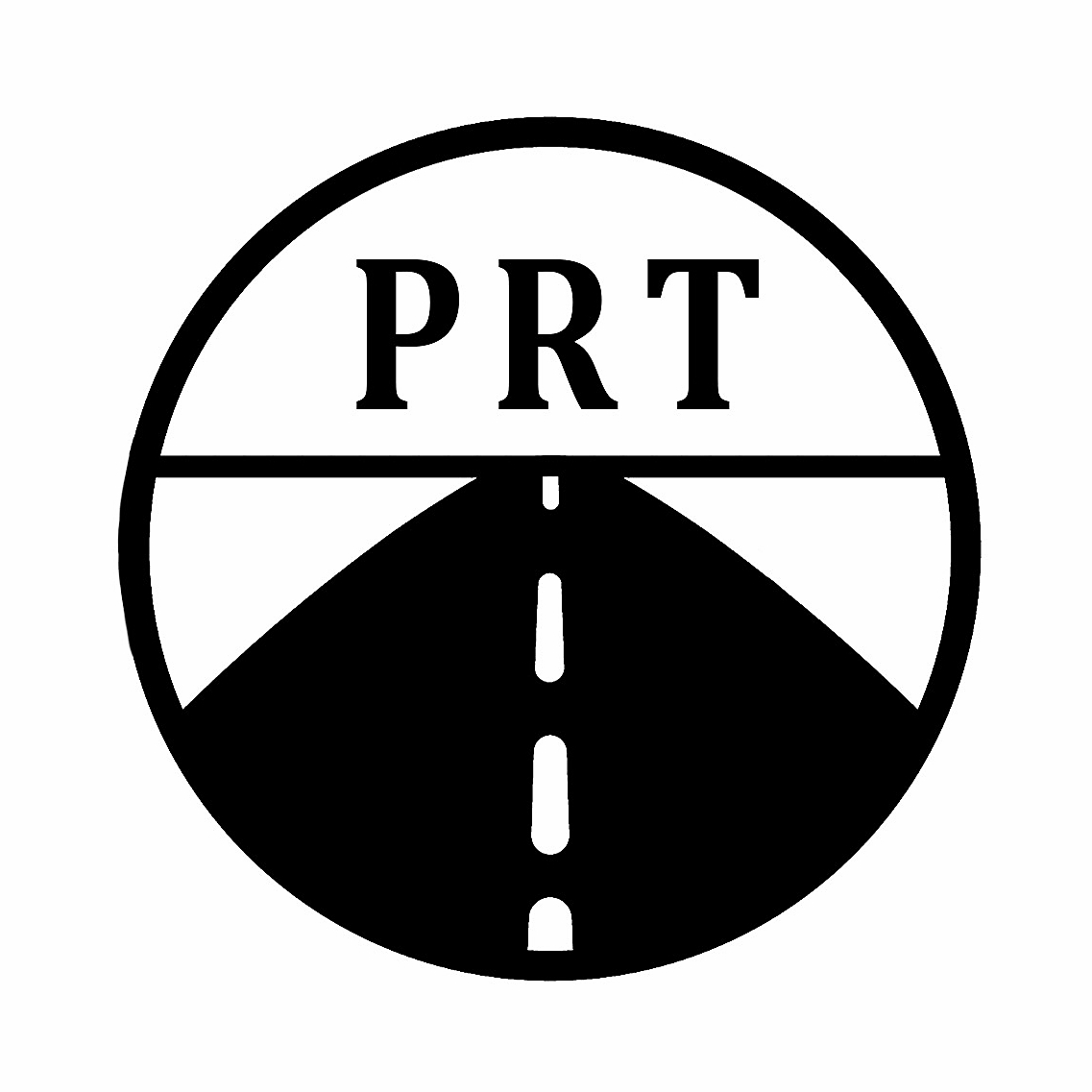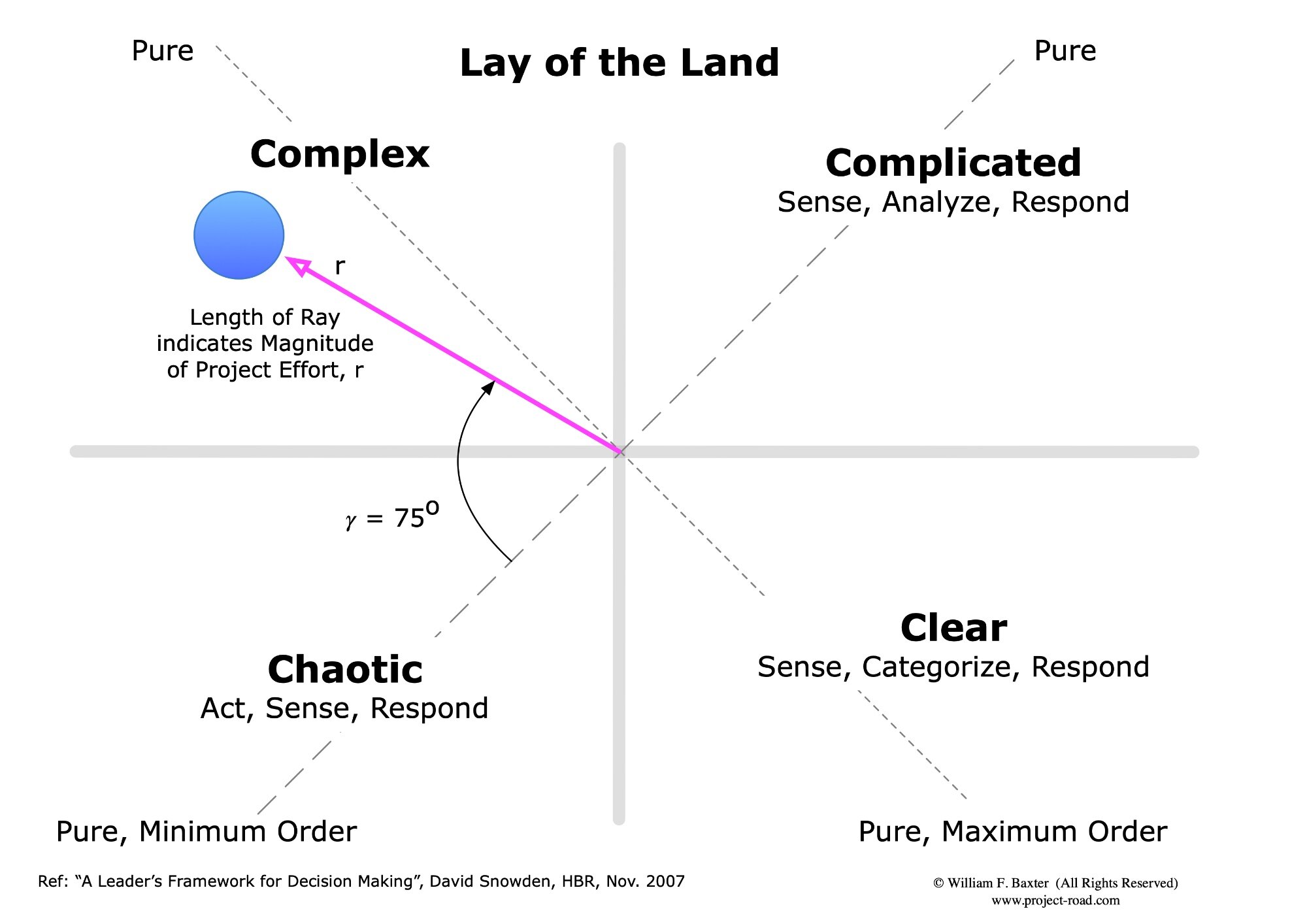Lay of the Land -- Inspired by the Cynefin Framework
/Introduction
I view the Cynefin framework as a valuable perspective — key to understanding when to use a more Agile or Predictive Project Management approach for a situation, given the ‘Lay of the Land’ (or “place of our multiple belongings” — to use David Snowden’s description of ‘Cynefin’). Figure 1 shows my suggested modification of David Snowden’s Cynefin Framework, which I believe leads to a simpler perspective.
When I first saw the Cynefin framework, I tried to identify dimensions along the horizontal and vertical axes. Along the horizontal axis it seems that degree of ‘Order’ makes sense: less order to the left, and more order to the right. But I could not identify units along the vertical axis.
Figure 1
Then it occurred to me that polar coordinates made more sense (Figure 2). With this perspective the hard boundaries between the different domains dissolve. The ‘Cliff’ between Clear and Chaotic domains dissolves, as do the mysterious ‘’Liminal’ zones between the other regions. For the record, David Snowden objects to my characterization of his liminal zones as being mysterious. I am grateful that he provided feedback.
In figure 2 we see ‘Pure’ states on the diagonals of each quadrant. The diagonal through the Chaotic quadrant represents a ‘Pure’ Chaotic state where all is random. Taking this as the origin, and continuing clockwise, we move towards a ‘Pure’ complex state at the diagonal in the Complex quadrant.
Angular Dimension
The angular position 𝛾 indicates ‘Order’, and ‘Order increases smoothly until we reach maximum order at the diagonal through the ‘Clear’ state (Previously called ‘Simple’ state). From here additional clockwise rotation takes us from maximum order to minimum order as we rotate around to our origin at the diagonal in the Chaotic quadrant.
Figure 2
Radial Dimension
What about the other dimension — the radial dimension? In the context of project management, the magnitude of the scope of our project seems the relevant dimension. (Figure 3).
The radial length r is a measure of the size of our project — a larger scope being plotted further from the origin. Then degree of effort is analogous to Torque (how hard it is to move the project scope clockwise) and Work is proportional to r * (change in 𝛾), at a given level of effort, as we move the blue circle representing our scope from one angular position to another.
With the perspective polar coordinates provides to us, our sense-making becomes simpler and less mysterious (Figure 4).
Figure 3
As illustrated in the example of Figure 4, we progress from the starting point at a state of complexity with a bit of chaos mixed-in. We progress through the pure complexity diagonal and as we advance further, we are bringing more and more order to the situation. At the vertical boundary between Complex and Complicated, there is an imperceptible tilt from Complex with a lot of Complicated, over towards Complicated with a lot of Complex. This gradual transition represents likely environments better than David Snowden’s mysterious ‘Liminal Zone’. As we progress further, we get to pure Complicated. We progress a little further and get to our finish state which is Complicated with some elements of Clear (or Simple) mixed-in.
Figure 4
Conclusion
Using Polar Coordinates with the Cynefin Framework provides a simpler, more clear perspective to help us think about the nature of the lay-of-the-land, and the appropriate approach we would want to follow to advance our project work effort.
I understand that David Snowden and others have been working on the Cynefin Framework for over twenty years now, and I don’t mean to be presumptuous, but I’d like to suggest that my perspective described above is simpler and can be useful in helping us make intuitive decisions real-time on how to manage a project, and on how to explain that view to others.
References:
“A Leader’s Framework for Decision Making”, David Snowden, HBR, Nov. 2007
“Cynefin — Weaving Sense-making into the fabric of our world”, David Snowden & Friends, Cognitive Edge, 2021





